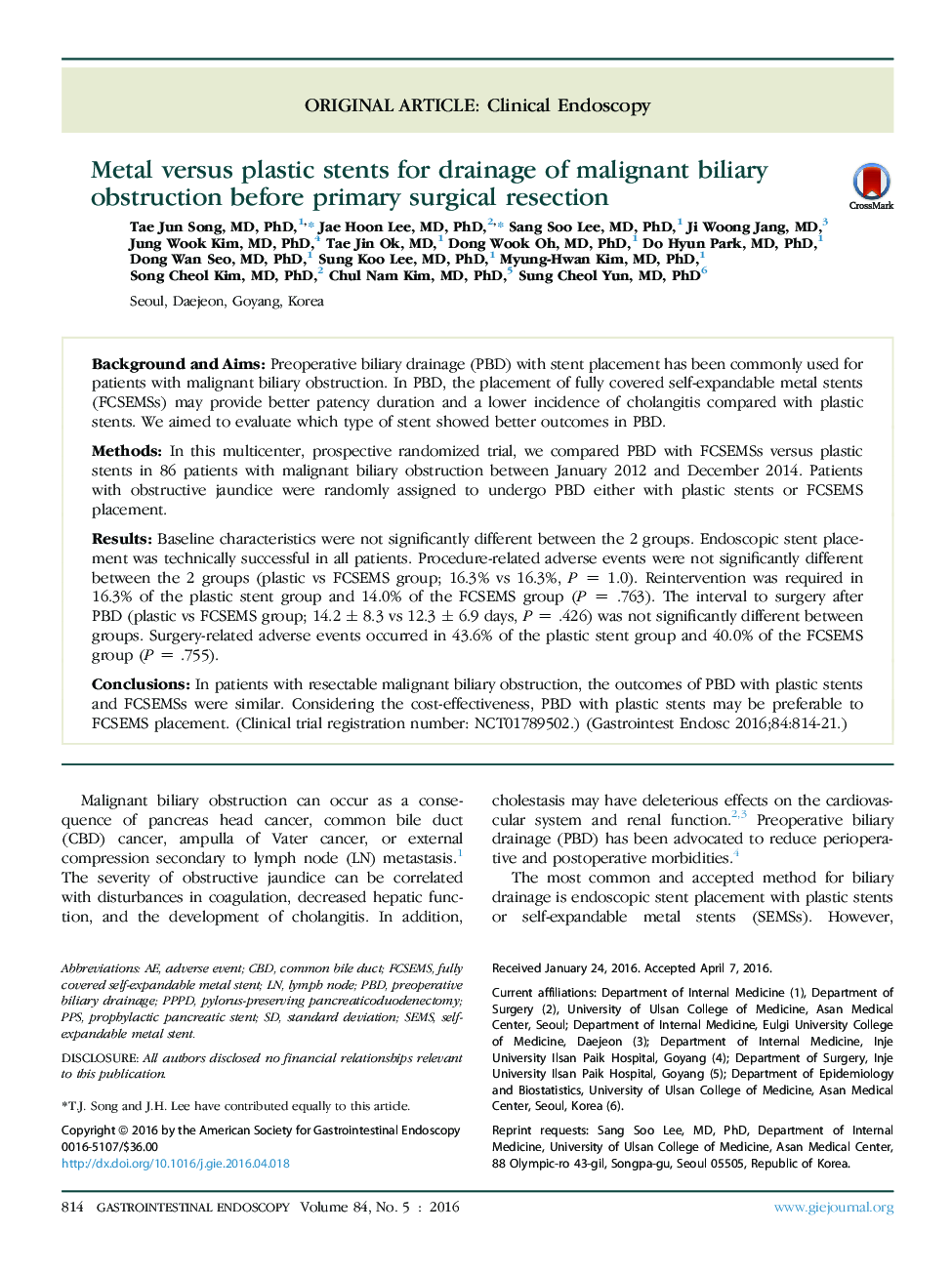| Article ID | Journal | Published Year | Pages | File Type |
|---|---|---|---|---|
| 5659700 | Gastrointestinal Endoscopy | 2016 | 8 Pages |
Background and AimsPreoperative biliary drainage (PBD) with stent placement has been commonly used for patients with malignant biliary obstruction. In PBD, the placement of fully covered self-expandable metal stents (FCSEMSs) may provide better patency duration and a lower incidence of cholangitis compared with plastic stents. We aimed to evaluate which type of stent showed better outcomes in PBD.MethodsIn this multicenter, prospective randomized trial, we compared PBD with FCSEMSs versus plastic stents in 86 patients with malignant biliary obstruction between January 2012 and December 2014. Patients with obstructive jaundice were randomly assigned to undergo PBD either with plastic stents or FCSEMS placement.ResultsBaseline characteristics were not significantly different between the 2 groups. Endoscopic stent placement was technically successful in all patients. Procedure-related adverse events were not significantly different between the 2 groups (plastic vs FCSEMS group; 16.3% vs 16.3%, P = 1.0). Reintervention was required in 16.3% of the plastic stent group and 14.0% of the FCSEMS group (P = .763). The interval to surgery after PBD (plastic vs FCSEMS group; 14.2 ± 8.3 vs 12.3 ± 6.9 days, P = .426) was not significantly different between groups. Surgery-related adverse events occurred in 43.6% of the plastic stent group and 40.0% of the FCSEMS group (P = .755).ConclusionsIn patients with resectable malignant biliary obstruction, the outcomes of PBD with plastic stents and FCSEMSs were similar. Considering the cost-effectiveness, PBD with plastic stents may be preferable to FCSEMS placement. (Clinical trial registration number: NCT01789502.)
